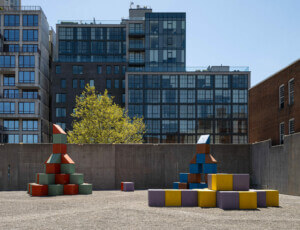Since 1984, the University of Michigan’s (UM) Taubman College of Architecture and Urban Planning has welcomed Taubman Fellows into its ranks to teach history, theory, and studio while cultivating their own academic interests. This year’s cohort—Strat Coffman, Salam Rida, Anna Mascorella, and Alina Nazmeeva—has created immersive exhibitions on display at the Liberty Research Annex and Gallery in downtown Ann Arbor, a repurposed brick-and-mortar multi-use building owned by UM. Exposed hardware, photography from Fascist Italy, immersive game engine worlds, and domestic ephemera are all on view.
At the Liberty Research Annex and Gallery, Coffman, Rida, Mascorella, and Nazmeeva created four installations in the group show, Touch Points. Salam Rida’s exhibition, Welcome Home, situates itself at the intersection of housing policy, historical narratives, and social constructs. Rida created an exhaustive timeline for visitors, that they themselves can populate, that tells the story of housing discrimination in the U.S.
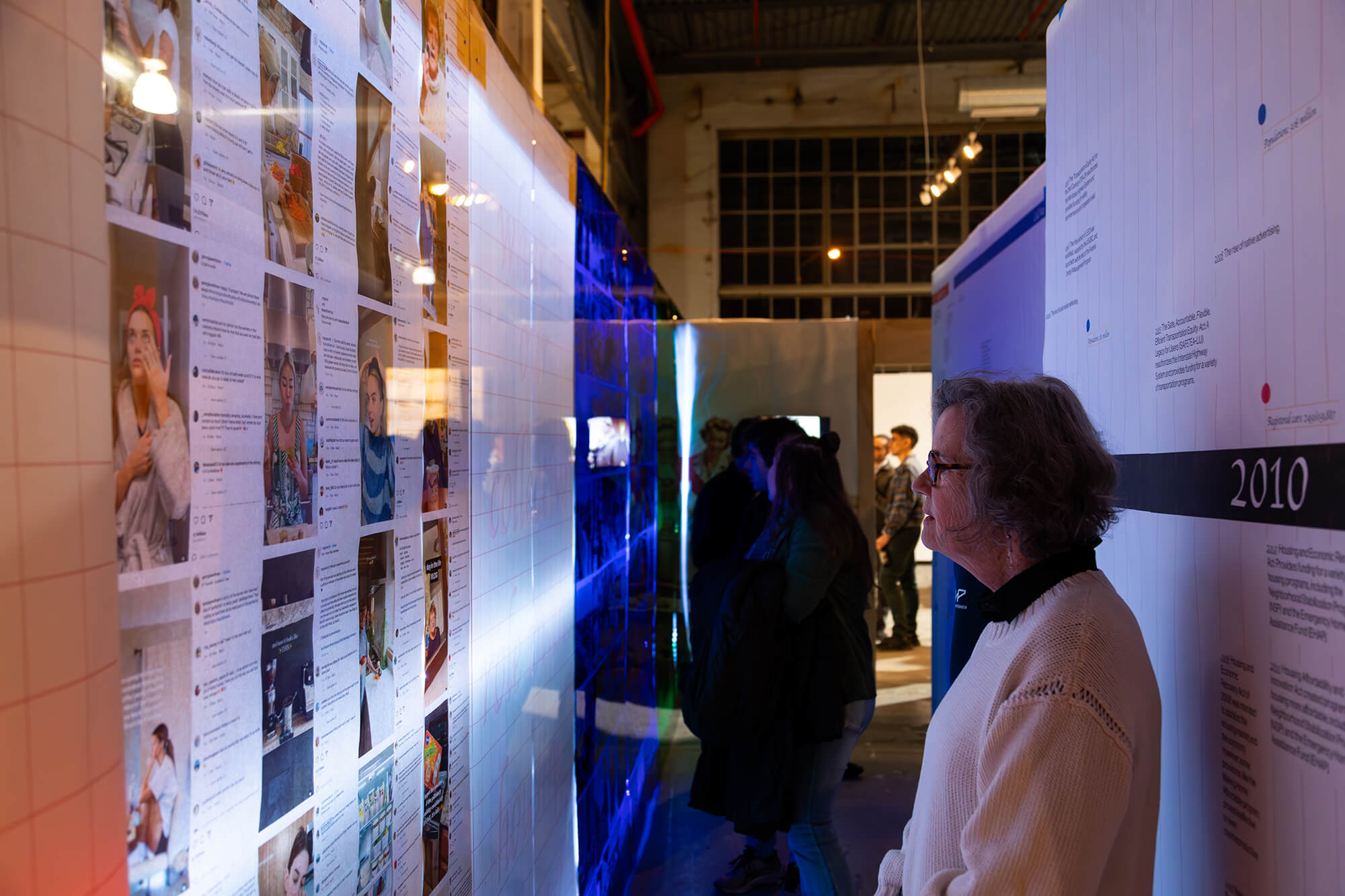
Strat Coffman’s piece, titled Erotica Generica, is a “cross between an appliance petting zoo and a softened workplace lounge,” the artist said. There, Coffman took conventional appliances in homes around the U.S. like push plates, door jambs, door knobs, and handrails to challenge visitors to rethink the way they engage with architecture.

Anna Mascorella’s piece tells the story of architecture in Fascist Italy. Rehousing Rome bears witness to the families displaced and rehoused during the Fascist regime’s redesign of Rome, Mascorella said. With maps, photographs, administrative records, and architectural drawings, Mascorella renders in detail public housing developments built under Mussolini. In total, Mascorella sheds light on 4,113 people that were displaced and rehoused by Mussolini’s regime between 1933 and 1934 at Borgata Gordiani.
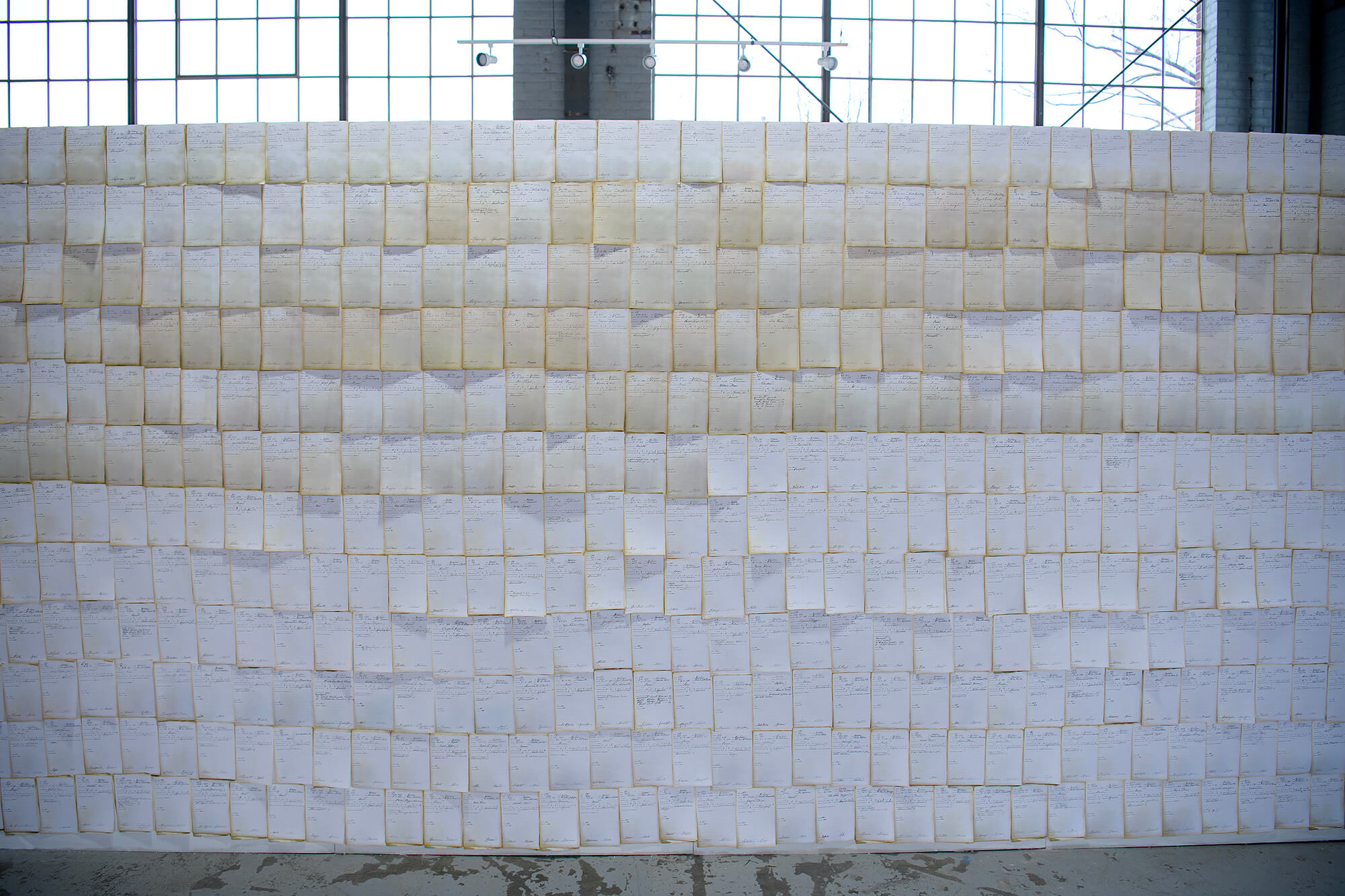
Alina Nazmeeva’s installation is titled bug in my software. There, Nazmeeva designed a polychromatic carpet for visitors to sprawl, and wear immersive headsets. bug in my software asks guests to put on goggles that immerses them in a verdant game engine full of foliage and insects. The installation collapses the physical and digital worlds into one while posing thorny questions about gender, class, and artificial intelligence, as well as exploitation in global supply chains more broadly. “Working with fiber, thread, weaving, sewing, embroidery, quilting, knitting—at least since the industrial revolution—is largely considered a domestic, “low art,” or is a low-pay and women-dominated factory job either in the global south or the global north,” Nazmeeva wrote in her artist statement.
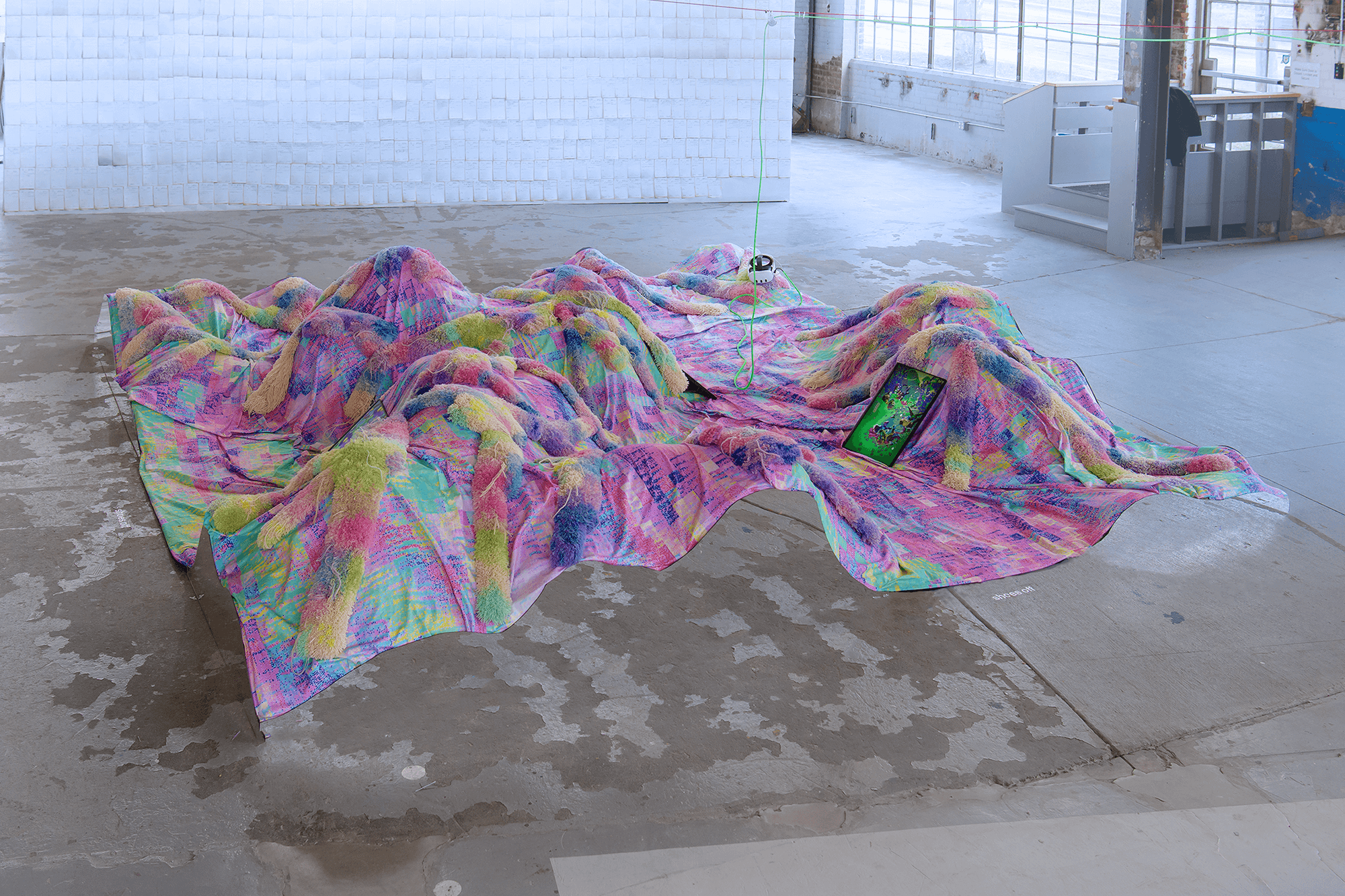
“Textile labor,” Nazmeeva continued, “historically devalued and predominantly female, finds its echo in the gendered design of AI: voice assistants, caregiving bots, and virtual helpers, often feminized in voice, form, and function. They are designed to be docile, soothing, accommodating, and perpetually available.”
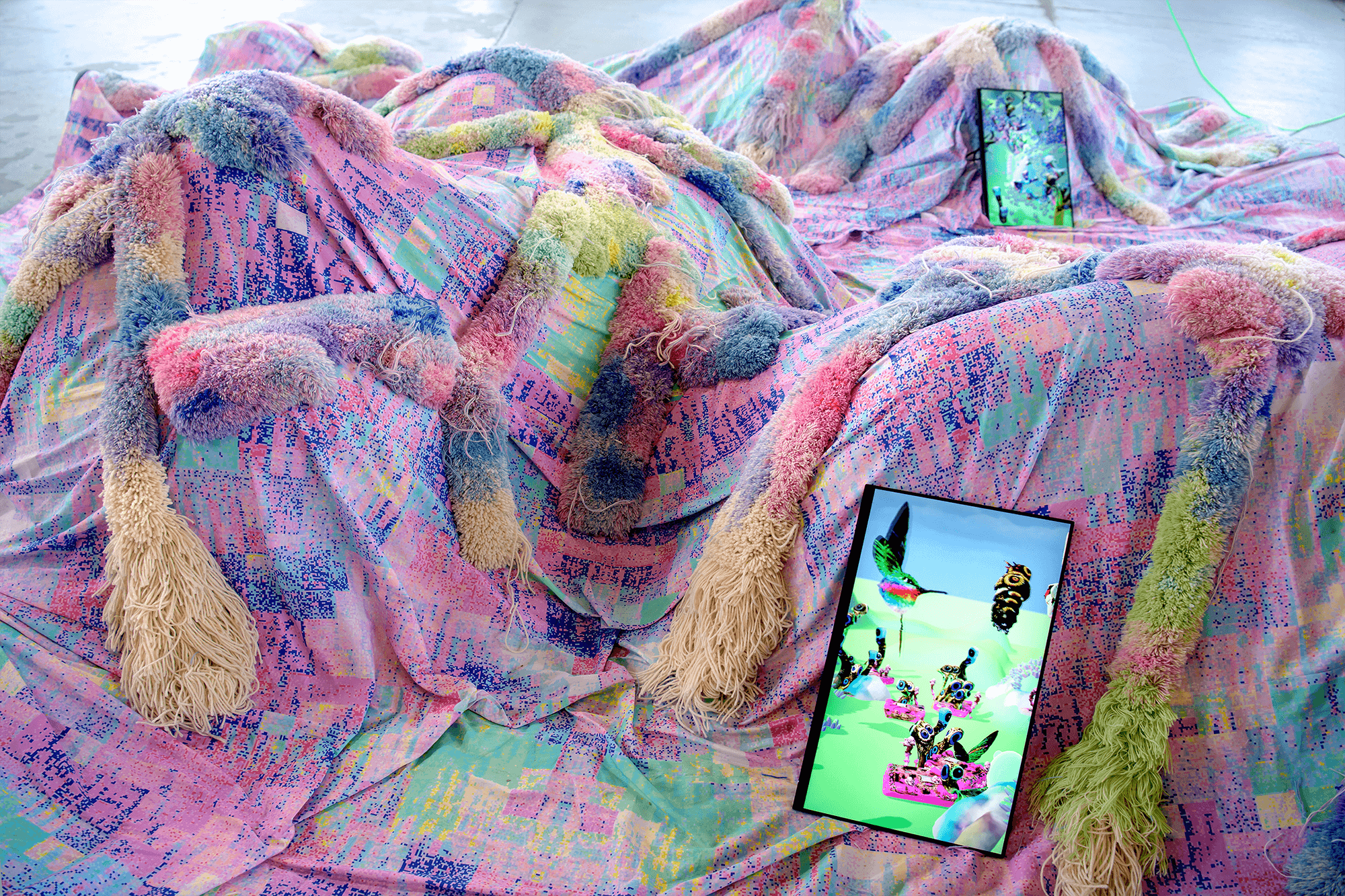
Part game design, part cyber-feminist manifesto, bug in my software is a contemporary piece with roots in the sci-fi ruminations of Ursula K. Le Guin. Nazmeeva continued: “There is indeed a pattern in technology in which more female artificial intelligences and gynoids are being created and imagined in mass culture because these machines tend to perform jobs that are associated with women…. Reflecting on this tension between labor, gender, and technology, bug in my software pairs physical textile installation and a speculative ecosystem simulation. The work can be experienced in extended reality and seen on screens scattered through the landscape.”
Touch Points is on display at the Liberty Research Annex and Gallery through March 23, 2024.








